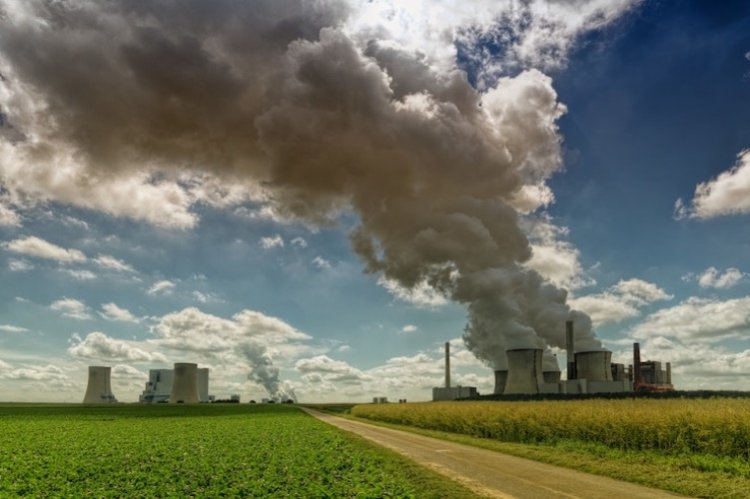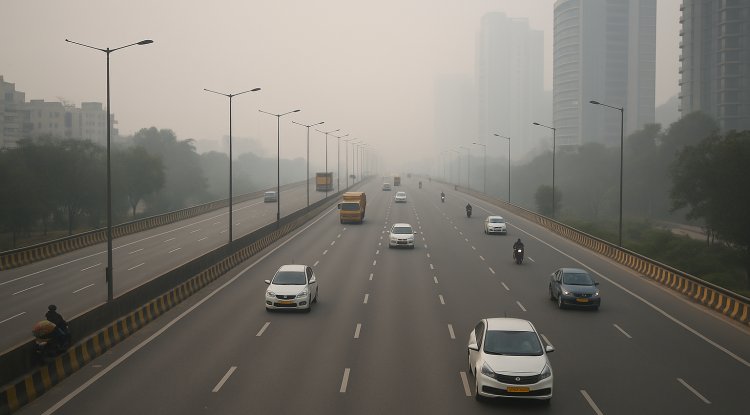Agricultural Liming Emerges As Major CO2 Sink
Research shows liming soils can cut CO2, challenging global guidelines that label it a source of carbon emissions.

Contrary to globally accepted climactic policy, new evidence at the Goldschmidt Conference in Prague indicates agricultural liming — long considered to be a carbon dioxide source — can act as a powerful carbon sink. Carried out by researchers at Yale Centre for Natural Carbon Capture, the research utilizes more than a century's worth of data from the Mississippi River basin and employs advanced computer modeling in order to explore the effect of liming on atmospheric CO2.
Liming has traditionally been employed to correct soil acidity, a practice required to enhance crop yields. But following existing practices advocated by organizations like the Intergovernmental Panel on Climate Change (IPCC), all of the lime's carbon is emitted into the atmosphere as CO2 upon application. These processes have determined emissions inventories across the globe and impacted policy on climate, which tends to tax applications of lime to agriculture.
But the latest research, however, appears to indicate that this train of thought is based on a false premise. It is not the lime which produces the CO2 emissions, but the manner in which it reacts with the strong acids already in the soil, the nitric and sulfuric acids, whose origins are atmospheric and also from fertilizer nitrogen. Suhrhoff describes the process by which when lime is applied to acid soils, it reacts with the carbonic acid to produce bicarbonate, calcium, and magnesium. In acid conditions, the bicarbonate will decompose and release CO2. But without the presence of strong acids, this reaction series does not happen — and liming therefore can actually take net carbon out of the air.
"Our work demonstrates that the acidity — and not the lime — is responsible for mobilizing carbon dioxide emissions in soils," Dr. Suhrhoff explained. "When aggressive acids are absent, adding lime results in the formation of stable bicarbonates that sequester carbon away instead of releasing it. This defies existing assumptions applied in greenhouse gas accounting that treat liming as a purely emission-generating process."
The research followed alterations in river chemistry and geochemistry of soil in the Mississippi River watershed back to as early as 1900. It established that more fossil fuel burning and more nitrogen fertilizer use after the 1930s greatly boosted soil acidity. Meanwhile, scientists noted that the effectiveness of liming to sequester atmospheric carbon has been on the rise over the years, with current removal occurring at close to 75% theoretical maximum rate. This is an unexploited mitigation potential of climate change that is not accounted for in current global accounting frameworks.
These findings hold significant policy implications for agriculture. The researchers believe that global climate models and schemes for reducing emissions need a change of gear. Instead of penalizing the use of lime, which stimulates agricultural production and food supply, policies need to be directed towards restricting acid-generating activities like excessive use of nitrogenous fertilizers and unbridled industrial effluxions.
"There is a fundamental misunderstanding at the policy level," Suhrhoff reiterated. "Existing legislation presumes that without liming, emissions would not occur. But the reality is, if we continue adding acidity to the soil, sooner or later it will hit some remaining natural alkalinity and release regardless of whatever liming is done. By shifting the cause, we might be stifling an activity which otherwise would be a huge boon for long-term carbon storage."
Yet, the group also called for a science-informed and precautionary approach. They suggest a two-phase methodology: a first action of application of silicate rock to dissolve high acidity, followed by selective liming. This kind of strategy would lower emissions, enhance soil health, and sequester carbon, all with enhanced agricultural yields and lower nitrous oxide emissions.
Its presence at the elite Goldschmidt Conference — geochemistry holy land cosponsored by the European Association of Geochemistry and the Geochemical Society — gives credibility to the research. Participants featured more than 4,000 of the world's top scientists, which provided an ideal forum for challenging deeply ingrained assumptions and sharing new concepts about the climate crisis.
Yale scientists hope their research will spur reconsideration of the treatment of agricultural practice within climate reporting models and result in more intelligent, more valuable approaches to managing carbon in soils. As climate change accelerates and pressure for bulk-scale mitigation technology grows, such reappraisal has the potential to open essential new avenues to world sustainability.
What's Your Reaction?

















